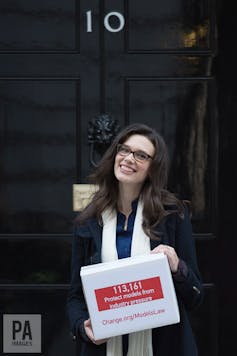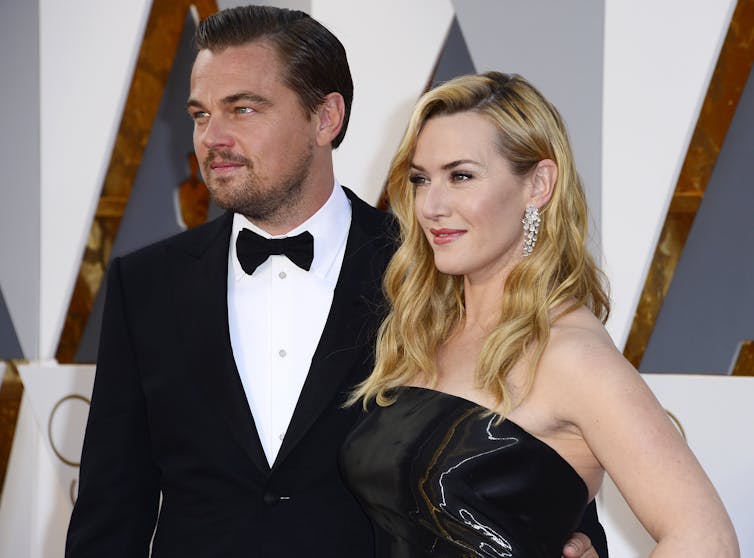Real beauty doesn’t need to be retouched
The giant global photographic agency, Getty Images, has announced it plans to ban retouching of images of models “to make them look thinner or larger”. The move follows a change to the law in France that requires images where the “body of the model has been modified … to either slim or flesh out her figure” to be accompanied by a “photographie retouchée” label.
These are groundbreaking developments which could be incredibly important, not just for the fashion industry, but for generations to come who may no longer grow up with unrealistic expectations of how their bodies should look, based on images of size zero models in glossy magazines.
The retouching of photos has been happening for many years – in the early sixties, one of my mother’s duties at a photographic studio was to add rosy tints to the cheeks of brides and babies. In the golden age of the Hollywood starlet, photographers peered through a “misty” filter that gave a softly perfect complexion. Body shapes have come in and out of fashion, from the curvaceous figures in Rubens’ famous paintings of the 1600s to the straight up-and-down flat-chested flappers of the 1920. The enhancement of the face with make-up dates back to the Egyptians.
But digital technology has made all of this so much easier and we are now bombarded on social media with images of celebrities with flawless skin and lean, toned limbs. People achieve celebrity these days with no talent other than the fact that they can look good in a photograph. Meanwhile young girls are increasingly obsessed with photographing themselves in their latest outfits and professionally applied makeup in the pursuit of the same look. Apps further enhancing these photos are now the norm. More and more girls are rejecting the traditional gift of jewellery for an 18th birthday, in favour of cosmetic surgery. There are regular stories of trolling and bullying, and girls – and increasingly boys – feel pressured to lose weight and look perfect. Tragically, this pressure is too much for some to bear.
Campaigners
In many couture houses and catwalk shows, super-thin teenage models have become the norm. After a modelling agency told Rosie Nelson to slim down “to the bone” in order to get work, she started campaigning to make it illegal to hire dangerously thin models. Her petition was signed by more than 100,000 people and she was invited to give evidence at a parliamentary inquiry.

Stefan Rousseau/PA Archive/PA Images
Other trailblazers include Ben Barry of the Ryerson school of fashion in Canada, who I met when I guest lectured to his class in Toronto. He has long been a campaigner and founded the first model agency dedicated to diversity, working on the celebrated Dove campaign. He is determined that the fashion and beauty industry should represent not only all cultures, shapes and sizes but abilities.
I attended a fashion show during Toronto Fashion week and was delighted to see a model with a prosthetic leg, which had been specially designed to be a work of art as well as functional. Barry’s research suggests that there is also a commercial advantage to representing diversity in fashion and beauty campaigns. He found that when customers see products on models that they can relate to, there is a 200% increase in “intention to purchase”. It is both common sense and business sense.
Celebrities are also recognising the need for authenticity in how they are represented. Actress Kate Winslet famously objected to the alteration of her image on the cover of a 2003 edition of GQ magazine. The photographic image had been retouched to make her face flawless and her body was reshaped to give her leaner thighs arms and waist. She stated that there was nothing wrong with the original and did not want excessive retouching in the future. A clause was written into her contract with l’Oreal to that effect.
Other celebrities who have objected to the practice include Cate Blanchett, Brad Ptt, Jessica Simpson and Helen Mirren.
A shift in attitude
The fashion industry continues to alienate much of society, while putting unrealistic pressure on others. This cannot continue – we have a generation of young people who are being encouraged to pile pressure on themselves to emulate the unattainable. For most people, this results in nothing but low self-esteem and a distortion of values.

EPA/Mike Nelson
It’s bad for trade as well. Often customers pick a garment off a rail, see it on an elongated super slim mannequin and assume it will not look good on them, so return it to the rail. Retailers such as Debenhams have recognised this and understand that sales would increase if clothing were on mannequins that actually looked more like them, so introduced size 16 mannequins.
There needs to be a cultural shift in attitudes to what is beautiful – and the fashion industry must take some responsibility as it has the power to challenge the concept of flawlessness and embrace diversity. Collective commitment can quickly embrace change in society. For example, it has become the cultural norm to recycle, stop smoking and re-use our shopping bags.
And so change must come to the fashion industry – retailers must now champion diversity in models and represent all of society, as part of the wider movement of “responsible fashion”. And this is where the media comes in: authenticity in fashion must extend beyond the factory and into the media where myths about beauty are created and perpetuated.
